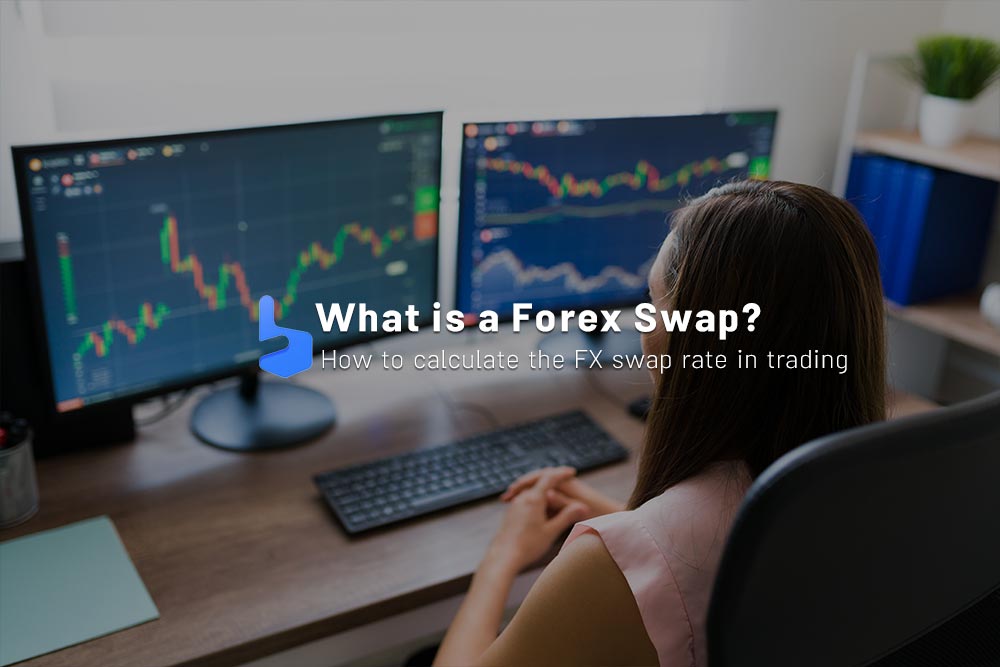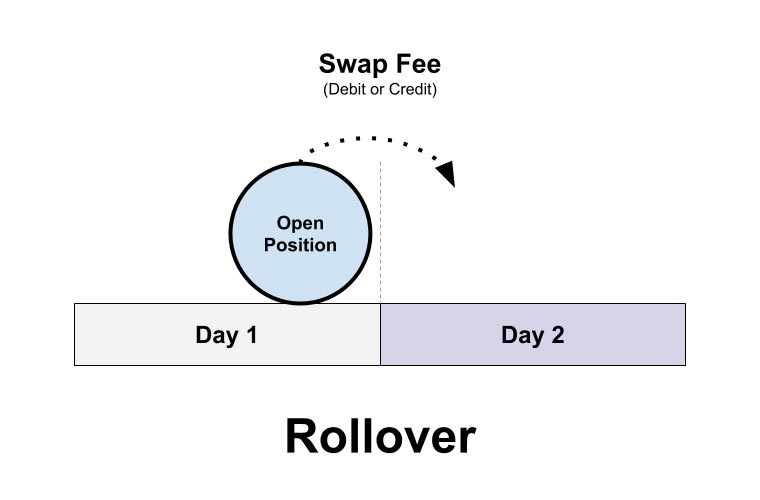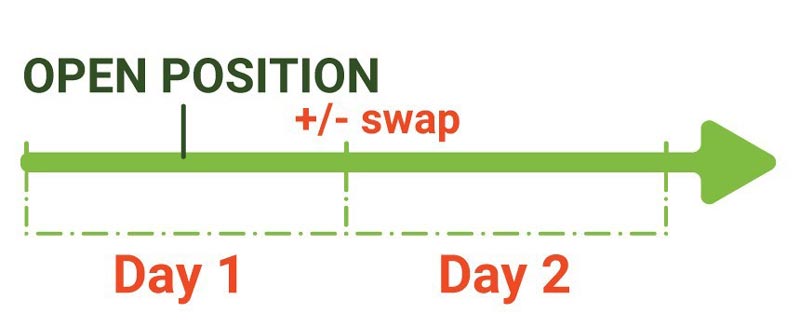What you are about to read:
Forex trading involves buying and selling currencies simultaneously, and traders enter this market to profit from currency rate fluctuations. However, Forex also involves complexities and various mechanisms that traders must understand, such as the concept of FX swaps.
A Forex swap is a vital aspect that affects the cost of holding positions overnight. It’s a mechanism used by Forex brokers to manage interest rate risks associated with maintaining Forex positions overnight, especially in leveraged trading scenarios. In this article to learn Forex trading, we delve into the concept of Forex swaps, how they work, their purpose, calculation methods, and practical concepts for traders.
What is a FX Swap?
A Forex swap, also known as currency swap or FX swap, is a financial derivative where two parties exchange currencies for a specified period. This exchange includes the principal amount and the interest rate related to the traded currencies.
Swaps typically refer to overnight profit or financing costs that traders incur or earn for holding overnight positions and are used to reconcile the interest rate difference between the traded currencies.
Role of Swaps
The purpose of FX swaps encompasses several key functions that facilitate smoother and more efficient trading operations. Below are its key objectives:
Interest Rate Management: Forex Swaps are used to manage and hedge against interest rate fluctuations between different currencies. This is particularly important for traders and investors with international portfolios or engaged in cross-border transactions.
Rotation and Continuation of Positions: One of the primary objectives of swaps in trading is to facilitate the continuation and rotation of positions beyond the standard settlement period of the cash market (usually two business days). In Forex leveraged trading, where positions are often held overnight or for longer periods, FX swaps allow traders to increase their positions without the need to close and reopen trades, thus preventing potential disruptions and additional costs.
Cost Considerations: Forex Swaps reflect the cost or benefit of holding an overnight position based on prevailing interest rates in the traded currencies. This is known as “Carry Considerations.” The swap rate applied by brokers indicates the interest rate difference between two currencies in a currency pair. Traders should consider these costs when holding overnight positions as they directly impact their profitability.
Risk Management: Another important objective of FX swaps is risk management, helping traders reduce risks associated with currency and interest rate fluctuations.
Facilitating Carry Trades: Carry trades involve borrowing funds in a currency with low interest rates and investing in a currency with higher interest rates to capture the interest rate difference (carry). Forex swaps enable traders to participate in these trades by providing a mechanism to manage interest rate-related to maintaining positions in different currencies.
Central Bank Operations: FX swaps are also used by central banks as a monetary policy tool to manage domestic currency liquidity and stabilize currency markets. Central banks use swaps to intervene in currency markets, provide liquidity to commercial banks, and influence interest rates. These operations play a crucial role in maintaining financial stability and supporting economic objectives.
Calculating Forex Swaps
Calculating swaps involves determining the financing costs or credits associated with holding overnight positions in the currency markets, calculated based on the interest rate difference between the traded currency pairs and the size of the position. Depending on whether you have a long (buy) or short (sell) position, the process may vary slightly. The general formula for calculating the FX swap rate is as follows:
swap = trade size × swap rate × number of days
Where:
- Trade Size: The size of the position you are trading, usually expressed in standard lot in Forex (for example, 1 standard lot = 100,000 units of the base currency).
- Swap Rate: The interest rate difference between two currencies in the currency pair you are trading. This can be obtained from your broker’s trading platform.
- Number of Days: The number of days you hold the overnight position. This is usually one standard day for most brokers, but may vary depending on the broker and currency pair.
Example
Suppose you are trading 1 standard lot (100,000 units) of EUR/USD, and the FX swap point for long positions (buying EUR/USD) is -0.5 points. The current swap rate for EUR/USD is 1.2000.
Calculating the swap rate:
Swap Rate = -0.5 points × 100,000
Swap Rate = -50 euros
Converting the rate to account currency:
If your account currency is USD and the current EUR/USD rate is 1.2000:
Swap Rate in USD = -50 EUR × 1.2000
Swap Rate in USD = -60 USD
Therefore, you would incur or receive a swap cost of $60 for holding an overnight long EUR/USD position.
Important Considerations Regarding FX Swaps
- Swap rates can vary daily based on changes in interest rates and market conditions.
- Brokers may adjust swap rates for specific currency pairs or during specific market events.
- FX Swap rates are typically applied at 5:00 PM New York time (market rollover time).
Checking your broker’s swap rates and policies, like discussing their slippage policies, is essential as they can significantly impact the cost of holding overnight positions. With an understanding of how Forex swaps are calculated, traders can effectively manage their trading costs and incorporate these considerations into their overall trading strategies.
Is the swap rate the same across different brokers?
No, the swap rate in Forex can vary between different brokers in the Forex market and is influenced by various factors including the broker’s liquidity providers, their internal policies, prevailing interest rates, market conditions, and other considerations. Here are reasons why the FX swap rate may differ among brokers:
Liquidity Providers and Market Conditions
Brokers source liquidity from various providers such as banks, financial institutions, and liquidity pools. The Forex swap rates offered by these liquidity providers may vary based on market conditions, interest rate differentials, and liquidity dynamics in the interbank market. Therefore, brokers may pass on these differences in the form of different swap rates to their clients.
Broker Markup or Commission on Swaps
Some brokers may add a markup or commission to the FX swap rate as part of their fee structure. This markup can vary among different brokers and may contribute to differences in the swap rates offered to traders.
Forex Swaps and Currency Pair Interest Rate Differences
This difference is essentially influenced by the interest rate differential between two currencies in a currency pair. Since interest rates can vary between different countries and change over time, brokers may adjust Forex swap rates based on the specific currency pairs being traded.
Risk Management and Broker Policies
Brokers have their risk management policies and considerations that can impact swap rates. Factors such as client trading volume, market risk exposure, and overall risk tolerance can influence how brokers determine and adjust swap rates for their clients.
Market Volatility and Economic Events
Forex Swap can be influenced by market volatility and significant economic events. During periods of increased volatility or major Forex news releases, brokers may adjust swap rates to manage risks and respond to market conditions.
Importance of Comparing Forex Swap Rates
Given the potential variations in FX swap rates among brokers, it’s important for traders to compare swap rates when selecting a broker or evaluating trading costs. A lower Forex swap can reduce the cost of holding positions overnight, especially for traders engaging in carry trades or long-term strategies that require maintaining positions for extended periods.
Traders should also consider other factors such as trading costs, forex spreads, execution quality, regulations, and customer services when choosing a broker. It’s advisable to review the rates and policies of brokers before opening an account to ensure they align with your trading strategy and goals. All the best and safest brokers available to brokers, including Alpari, OmegaFinex, USGFX, Fibo group, LiteForex, Orbex, and many others, have been compared in Brokerland website, allowing you to easily conduct the necessary research and evaluations in this regard.
Summary
Forex Swaps play a vital role in the global currency markets, enabling traders to manage interest rate risks and extend trading positions beyond the standard cash market settlement period. Understanding how FX swaps work is crucial for traders to effectively manage costs, execute strategies, and navigate the complexities of overnight trading in the Forex market.
Because swap rates may vary among brokers, it’s an important consideration for traders participating in overnight positions in the Forex market. Understanding how swap rates are determined and comparing rates among brokers can help traders optimize their trading costs and overall trading experience.











